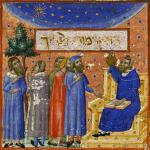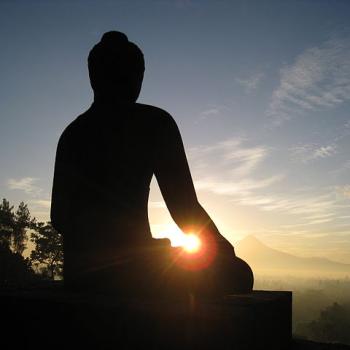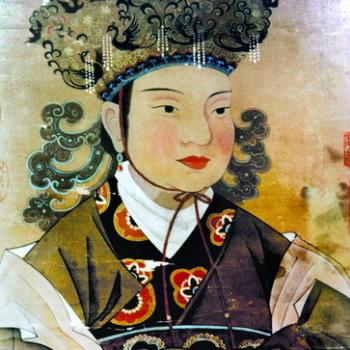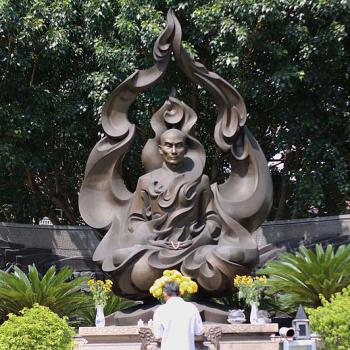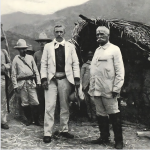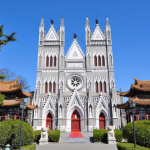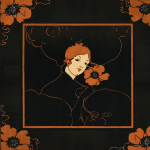Tina Turner (1939-2023) was a force of nature, and her music touched countless people. She also was a Buddhist, a practitioner of a tradition called Nichiren, after its Japanese founder. Tributes to the late entertainer include this lovely piece from the Los Angeles Times by Jonah Valdez, “How Tina Turner’s Buddhist faith gave her the strength to leave Ike Turner.” I’d like to provide a bit of background into Tina Turner’s Buddhism.
Buddhism, not unlike Christianity, is made up of many diverse denominations. After Buddhism was introduced to Japan in the 6th century, several schools of Buddhism flourished there. Most of these were based on schools that had originated in China. One of these was Tendai, from the Chinese Tiantai. Tiantai is a rich tradition that is known chiefly for two things. One, it attempts to harmonize all the many Buddhist teachings into a coherent whole. And two, Tiantai recognizes the Lotus Sutra (Saddharma Puṇḍarīka Sūtra) as its main scripture.
Tiantai was established in Japan as Tendai in the 9th century. By the Kamakura period (1185-1333), Tendai was arguably the most dominant school of Buddhism in Japan. Its main temple, Enryaku-ji, was built on Mount Hiei overlooking Kyoto. At its peak Enryaku-ji was a huge complex that could house as many as 20,000 to 25,000 monks. By the 13th century Enryaku-ji served as the primary Buddhist university in Japan. It gave Japan many prominent graduates, including monks who founded other schools. And one of these was Nichiren.
About Nichiren and Nichiren Buddhism
Nichiren (1222-1282) was a Tendai priest who came to believe that complex doctrines and rigid monastic practices were making Buddhism unreachable to most people. He proposed a simpler and more direct way to engage with the Buddha’s teachings. His Tendai education had persuaded him that the Lotus Sutra constituted the most perfect presentation of the Buddha’s teachings. The Nichiren school is centered in the Lotus Sutra to this day. Its primary daily practice is the daimoku, which is chanting the phrase Nam Myoho Renge Kyo, “Devotion to the Mystic Law of the Lotus Sutra.” (Note that you will often find Nichiren’s name given as “Nichiren Daishonin.” Daishonin is a title, meaning “great priest.” It is not a surname, as westerners occasionally assume.)
“If you recite these words of the daimoku once, then the Buddha nature of all living beings will be summoned and gather around you,” Nichiren wrote. Other practices of the Nichiren school include gongyo, the chanting of selected passages of the Lotus Sutra in a formal service.
Nichiren taught that each Japanese character of the Lotus Sutra is a living Buddha and contains the entirety of the Buddha’s teachings. Further, the written words of the Lotus Sutra are the Buddha’s mind made visible, he said. Devotion to the sutra and faith in the daimoku will enable anyone to actualize the teachings of the Buddha and realize Buddha-hood.
About the Lotus Sutra
The Lotus Sutra was probably written in India as early as the 1st or 2nd century CE. This means it isn’t quite old enough to be the words of the historical Buddha, and we don’t know who wrote it. This is true of several significant Buddhist scriptures, which don’t rest their claim to authority on being the Word of God but rather on the wisdom they convey to succeeding generations. The most popular translation of the Lotus Sutra into Chinese was by Kumarajiva, completed in 406.
The Lotus is best known for its several parables. Most of the parables are teachings on upaya, “expedient means.” The expedient means are means for realizing enlightenment. Upaya can be a means of conveying dharma, the teachings, without relying on words and conceptual knowledge. Just about any experience can be upaya if someone is open to it. The text of the sutra is laden with promises that the power of the sutra will enable all to enter Nirvana.
On a personal note — it really is a gorgeous sutra, full of stunning imagery. Some passages are genuinely inspirational. But in reading it I (eventually) realized that the Lotus Sutra, the published book with words on paper, is not itself the Lotus Sutra. The book only describes the Lotus Sutra. The true Lotus Sutra is something that is actualized by trust and devotion. And I realize this is not a practice that appeals to everybody. As a Zen student my own practice is quite different. But Nichiren’s practices resonate with many people. I understand Nichiren Buddhism today is the second largest school of Buddhism in Japan, after Jodo Shinshu.
Tina Turner’s Buddhism
Tina Turner’s introduction to Buddhism is portrayed in the 1993 film What’s Love Got to Do With It starring Angela Bassett as Tina. My understanding is that this portrayal is accurate. Valerie Bishop, a member of a Nichiren lay organization called Soka Gakkai (today Soka Gakkai International, or SGI), met Tina in a recording studio. Bishop taught Tina Turner to chant the daimoku. This 2021 article in La Yoga magazine by Amy V Dewhurst describes how Tina Turner used the chanting to turn poison into medicine.
“The more I chanted,” Tina said, “the more I felt my true self, my inherent Buddha nature, awakening. My life condition kept rising, and I developed a newfound feeling of detachment around my husband. I became so strong inside that eventually our conflicts began to feel like a game, like some sort of karmic test. In the midst of chaos, I felt as if I had been reborn. The brighter my inner light shined, the more my environment improved.”
The chanting showed Tina that she needed to make changes in her life. And it gave her the self-confidence to do it. She left her abusive relationship with Ike Turner and went on to living her life on her own terms. According to Jonah Valdez in the Los Angeles Times, she continued her devotional practice of the Lotus Sutra for the rest of her life. Further, “Throughout the last decade of her life, Turner was involved in various interfaith projects, such as the recording of a series of spiritual music albums with the Beyond Music project that combines Christian and Buddhist chants.” I did not know this and intend to check it out.
Tina Turner died on May 24 from natural causes at the age of 83. May her journey continue for the benefit of all beings.




